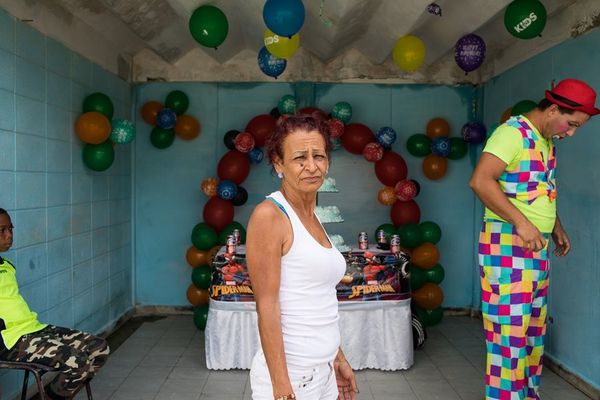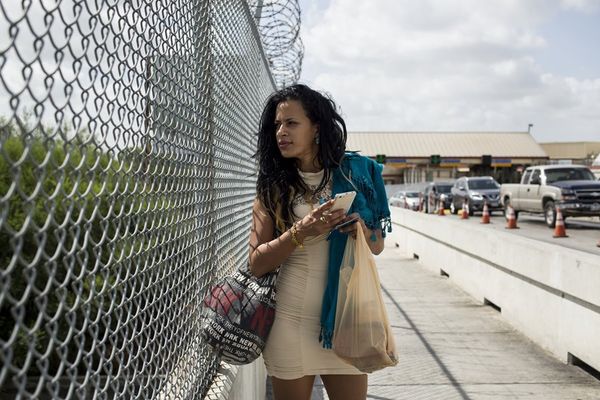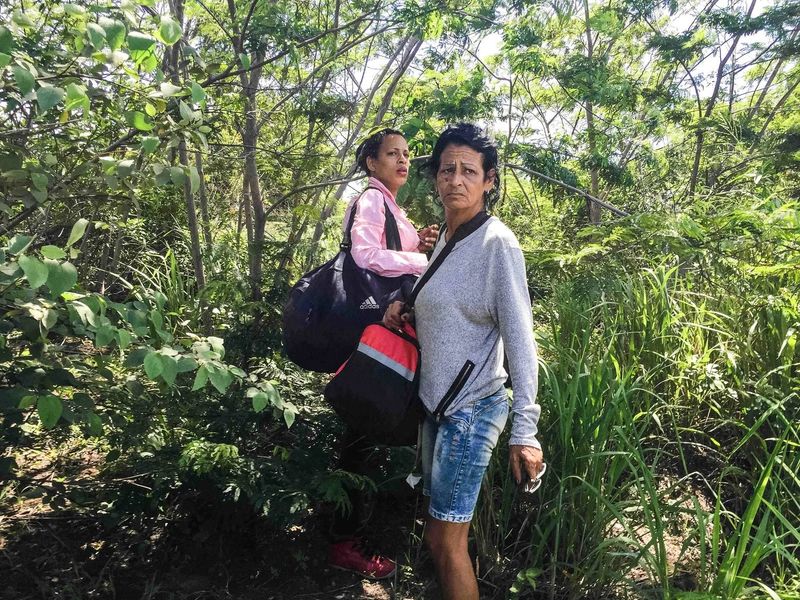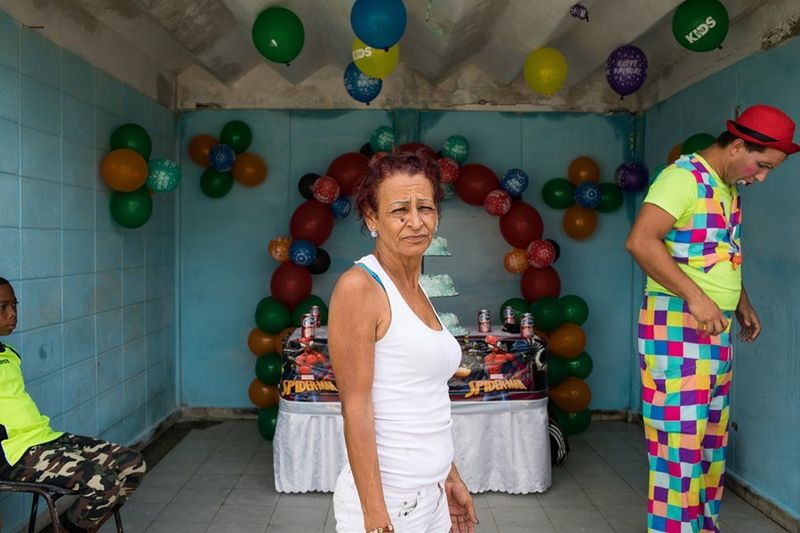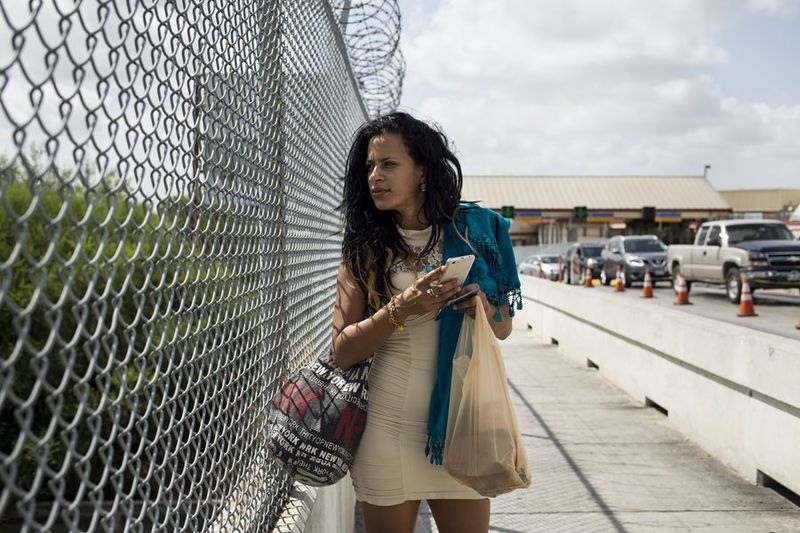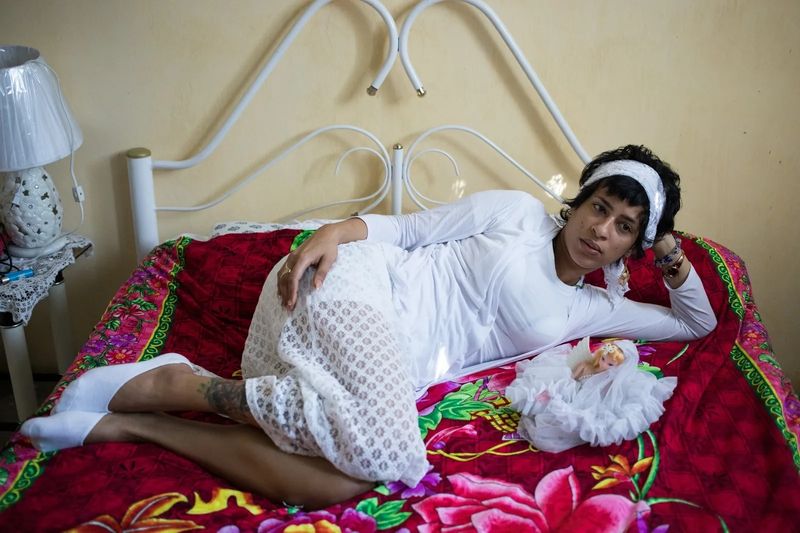A Story of Migration from Cuba to the United States
-
Published26 Nov 2020
-
Author
Inspired by the resilience and self-assurance of the Cuban people, Lisette Poole González set-off on a 51-day journey through 13 countries to document the travels of two Cuban women, Marta and Liset, as they went in search of a better life in the United States.
Inspired by the resilience and self-assurance of the Cuban people, Lisette Poole González set-off on a 51-day journey through 13 countries to document the travels of two Cuban women, Marta and Liset, as they went in search of a better life in the United States.
La Paloma y la Ley (The Dove and the Law) is a project that follows two Cuban women, Marta and Liset, who left the Caribbean Island in May 2016 with no plans, just the name of a coyote – known as the human smuggler – and a dream to make it to the United States before the imminent end of “wet foot, dry foot” - a policy that fast-tracked Cubans to asylum and permanent residency.
Photojournalist Lisette Poole González, herself a Cuban-American, followed them for 51 days, through 13 countries, across 10 borders, and 6 days in the Darien Gap - a roadless stretch of jungle between Colombia and Panama. Today, Lisette continues to document the journeys of Marta and Liset as they make new lives for themselves in the United States.
Migration is one of the critical issues of our times, often falling into stereotypes, how do you see your story as different?
Marta and Liset are unique and at the same time, completely representative of a large part of the Cuban population. They did not come from money, nor did they have relatives in the US sending remittances, but they found ways to rise above their circumstances nonetheless. Both women embodied the self-assuredness that I have always admired in Cubans. Despite their surroundings, their self-worth was based on who they were as people, their confidence was intact. So, when I followed them for 51 days on the way to Texas, I was not surprised to see moments of beauty and joy interwoven among the times of fear and uncertainty. I never saw them as victims, instead I looked up to their ability to move through danger with grace.
When the story was published, American xenophobia crept its way into the comments. People remarked that these women didn’t deserve to be in the United States —because Liset was a sex-worker, or Marta was a grandmother who smoked cigarettes. By taking away the victimhood in many migration stories, my book poses the question: who deserves to be welcomed into the US? To me, the answer is everyone.
Why was it important to you to tell the stories of Marta and Liset?
I feel very connected to stories of Cuban migration since, I grew up in a household with Cubans who went to the US through several waves of Cuban migration over the decades. Being a first-generation American, the sacrifices my family made were very present in my daily experience. My family's retelling of their lives in Cuba, politics, and how they were affected by migration policy — these were practically my bedtime stories.
When my cousin left from Ecuador on the long journey overland to the United States in 2015, I knew that I wanted to follow along and document a migration like his —one that 43,000 made that year. It was a look at migration that seemed to be missing from the international media's narrative of Cuba and of the global migration crisis of the time. In some ways, Cubans were privileged: the "wet foot, dry foot" policy allowed them automatic entry into the US. On average, Cubans were better educated and had more money than other migrant populations making similar treks to the US. Yet, the story had value, offered a new perspective and spoke to the effects of US policy on humans like; Marta and Liset.
As a photojournalist, do you find yourself in this story as well? Does the story reveal something about you?
I travelled with Liset and Marta often posing as a migrant and I paid coyotes to move me. So, when it came time to make the book, it was impossible to tell the story objectively and without my presence. Instead, I act as narrator, holding the reader’s hand throughout the process of hopping ten borders, walking for six days in the jungle, or riding in a potato truck for fourteen hours while the driver nods off at the wheel. My biggest goal in making the book was to place the reader right there, in each moment of the experience. Sometimes, I do this with photos of Liset and Marta, at other times with ephemera, screen grabs and transcriptions from videos, and other times with my own inner dialogue. My hope is that if the reader is connected to migration through visceral feelings and emotions, the ability to see immigrants as “the other” is diminished.
The book is also bilingual, since it was essential to me that the people who trusted me to share their stories would be able to read and relive it themselves.
Once you accomplished the journey with Marta and Liset, how did you begin to edit the work? Did you need to take a break from the story?
I edited at first for TIME Magazine, immediately following the journey. I was able to pare down the work and it was edited for me, into a six-page layout.
When it came time to edit the book, the sequence went through may iterations and many sets of helpful eyeballs. Breaking the book down into chapters by country made chronology a defining factor. Photographers, Glenna Gordon and Peter Van Agtmael at Red Hook Editions and the book’s main designer Bonnie Briant, helped immensely. I had help from several friends and colleagues. Many things were changed at the last minute. Once, I edited while sitting in a rental car in Italy while on the phone with Peter. And yes, at many points I took necessary breaks.
Because my book is filled with text, Mariya Karimjee who edited the essays, had a pivotal role in the overall structure. She and I spent several weeks together in the summer of 2018, lining the brick walls of her Brooklyn apartment with giant pieces of butcher paper. With coloured markers, we laid out every topic I wanted to cover in the book. For example: if something was mentioned in an essay, it was possible to later cut a photo that repeated the idea. Some ideas are purposely repeated. Others become a product of the images like the words “Te Amo”, which appear twice in photos. Those words become a title of an entire essay. Some important ideas are expressed in captions. Themes related to spirituality are interlaid from the title to the very last page.
Tell us more about the book process, how did it come about? Did you edit it together with Marta and Liset or someone else?
For six weeks writing residency in upstate New York, I hardly wrote. Instead, I organised my reporting materials, deliberated on including myself in the book and I called Marta and Liset dozens of times for interviews. This regular communication allowed them to feel invested in the project. Overtime they trusted me more with their secrets. The three-year process allowed a new dynamic to evolve, one that was no longer “subject” and “journalist.”
In 2018, while writing the essays in New York, I felt stuck on the profile of Marta (titled The Volcano). She had done something during the migration to put my life in danger. I struggled to forgive her as I wrote the essay that I hoped would expose some inner truth about her. At my computer in Brooklyn, I was at a loss. I got on the subway and went to see her in New Jersey. She retold a story I had heard recounted several times, one about a giant scar on her hand that had caused a permanent curvature in two of her fingers. But this time, she told the story in a completely different way. Admitting an essential piece that she had been too proud to reveal before. I went home and finished the essay. Our collaboration, the closeness of our relationship and their trust helped make the book much richer than that of a journey. The book almost has no beginning or end.
-------------
Lisette Poole González is a Cuban-American photographer currently based in Mexico City. She was recently selected as a World Press Photo 6x6 Global Talent for North and Central America. Her first book, La Paloma y la Ley (2019 Red Hook Editions), was selected as one of Time Magazine’s photobooks of the year, and a finalist for Pictures of the Year International’s photobook of the year category. She regularly contributes for Time Magazine, The New York Times, The Atlantic, and The Washington Post. Follow her on Instagram and Twitter.
Verónica Sanchis Bencomo is a Venezuelan photographer and curator based in Hong Kong. In 2014, she founded Foto Féminas, a platform that promotes the works of female Latin American and Caribbean photographers. Follow her on Twitter and Instagram.
-------------
This article is part of In Focus: Latin American Female Photographers, a monthly series curated by Verónica Sanchis Bencomo focusing on the works of female visual storytellers working and living in Latin America.

